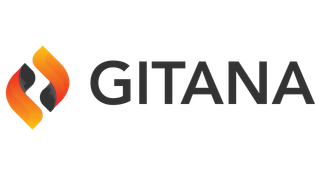Found 453 results for "api datatypes association"
The search executed in 0.0022 seconds. That's fast.

|
Gitana 3.2 / Guide / Guide / API / Data Types / PlatformDocumentation Reference Access and manage your platform's data efficiently with Cloud CMS, featuring configurable settings and robust support for teams and permissions. (Gitana 3.2)
Score: 4.5015
|

|
Gitana 3.2 / Guide / Guide / Cookbooks / JavaScript 2.0 CookbookDocumentation Reference Explore JavaScript 2.0 Cookbook for seamless Cloud CMS integration using async/await, promises, and callbacks. (Gitana 3.2)
Score: 4.47
|

|
How do I proxy API calls?Support Article Learn how to proxy API calls through a UI server for authenticated users. Access API resources securely. (Support 1.0)
Score: 3.8904
|

|
Gitana 3.2 / Guide / Guide / ActionsDocumentation Reference Explore Cloud CMS Action framework to automate content tasks, trigger emails or webhooks, and more using JSON configuration. (Gitana 3.2)
Score: 3.8824
|

|
Gitana 4.0 / Content Engine / Behaviors / ActionsDocumentation Reference Optimize your Cloud CMS with automated Actions for seamless content handling and workflow enhancement. (Gitana 4.0)
Score: 3.8824
|

|
Gitana 3.2 / Guide / Guide / Cookbooks / Ruby CookbookDocumentation Reference Optimize Ruby integration with CloudCMS using our comprehensive guide featuring setup, connection, and code samples. (Gitana 3.2)
Score: 3.6325
|

|
How to monitor API traffic from a node js appSupport Article Monitor API traffic in your Node.js app using Charles Proxy. Learn to set up reverse proxies for secure, insightful analysis. (Support 1.0)
Score: 3.0211
|

|
Gitana 3.2 / Guide / Guide / Content Modeling / DefinitionsDocumentation Reference Optimize your content management with Cloud CMS JSON schema definitions for robust validation, automation, and data integrity. (Gitana 3.2)
Score: 2.8881
|

|
Gitana 4.0 / Content Engine / Content Models / DefinitionsDocumentation Reference Optimize your content strategy using Cloud CMS with structured JSON schema definitions for automated validation and data integrity. (Gitana 4.0)
Score: 2.8881
|

|
How to Retrieve content by their document library pathSupport Article Learn to retrieve content using the CMS Node API by document library path with examples and advanced queries. (Support 1.0)
Score: 2.8368
|

|
How to get a content definition JSON from the Cloud CMS API?Support Article Learn how to retrieve content definition JSONs from Cloud CMS API using node or definition GET calls. (Support 1.0)
Score: 2.6835
|

|
Tree HierarchiesSupport Article Effortlessly manage and traverse tree structures in Cloud CMS with our robust API and traversal methods. (Support 1.0)
Score: 2.5966
|

|
Gitana 3.2 / Guide / Guide / User Interface / Projects / Deleted ItemsDocumentation Reference 'Easily manage and restore deleted content in Cloud CMS with our intuitive deletions index, mimicking the Recycle Bin.' (Gitana 3.2)
Score: 2.5572
|

|
Gitana 4.0 / User Interface / Projects / Deleted ItemsDocumentation Reference Efficiently manage and restore deleted content in Cloud CMS with easy access to the Recycle Bin and comprehensive API tools. (Gitana 4.0)
Score: 2.5572
|

|
Gitana 3.2 / Guide / Guide / Content Modeling / BehaviorsDocumentation Reference Automate your content delivery with Cloud CMS by wiring behaviors to execute rules and scripts seamlessly. (Gitana 3.2)
Score: 2.504
|

|
Gitana 4.0 / Content Engine / Content Models / BehaviorsDocumentation Reference Optimize content workflows with Cloud CMS by automating behaviors for seamless execution across various platforms. (Gitana 4.0)
Score: 2.504
|

|
How do I run custom validation before something is deleted?Support Article Optimize your deletion process with Cloud CMS's robust validation methods to prevent accidental data loss. (Support 1.0)
Score: 2.4514
|

|
Gitana 3.2 / Guide / Guide / Features / LockedDocumentation Reference Ensure nodes are secure and editable only by lock owners through the efficient use of API calls and the f:locked feature. (Gitana 3.2)
Score: 2.4482
|

|
Gitana 4.0 / Content Engine / Aspects / LockedDocumentation Reference Learn how to manage locked nodes, ensuring secure, owner-only access through API calls and lock inspections. (Gitana 4.0)
Score: 2.4482
|

|
Gitana 4.0 / ReferenceDocumentation Reference Explore detailed references for Gitana data types, including their schemas, properties, and method links in the Gitana API. (Gitana 4.0)
Score: 2.3855
|

|
Gitana 4.0 / Content Engine / FindDocumentation Reference Discover content effortlessly with Cloud CMS Find Service. Integrate query, search, and traversal in one seamless API. (Gitana 4.0)
Score: 2.3747
|

|
Programmatically create content in a folder?Support Article Effortlessly create content in folders with Cloud CMS using customizable JSON structures and special properties. (Support 1.0)
Score: 2.3642
|

|
Gitana 3.2 / Guide / Guide / UI Developers Guide / Contexts / document-actionsDocumentation Reference Manage document features like multilingual support or attachments with ease. Utilize actions such as lock, unlock, and more. (Gitana 3.2)
Score: 2.3596
|

|
Gitana 4.0 / Developers / User Interface Customization / Contexts / document-actionsDocumentation Reference Manage documents effortlessly with actions like adding features, translations, locking, and accessibility settings. (Gitana 4.0)
Score: 2.3596
|

|
Gitana 3.2 / Guide / Guide / FindDocumentation Reference Discover and retrieve content effortlessly with Cloud CMS's Find Service, utilizing Query, Search, and Traversal. (Gitana 3.2)
Score: 2.3362
|
